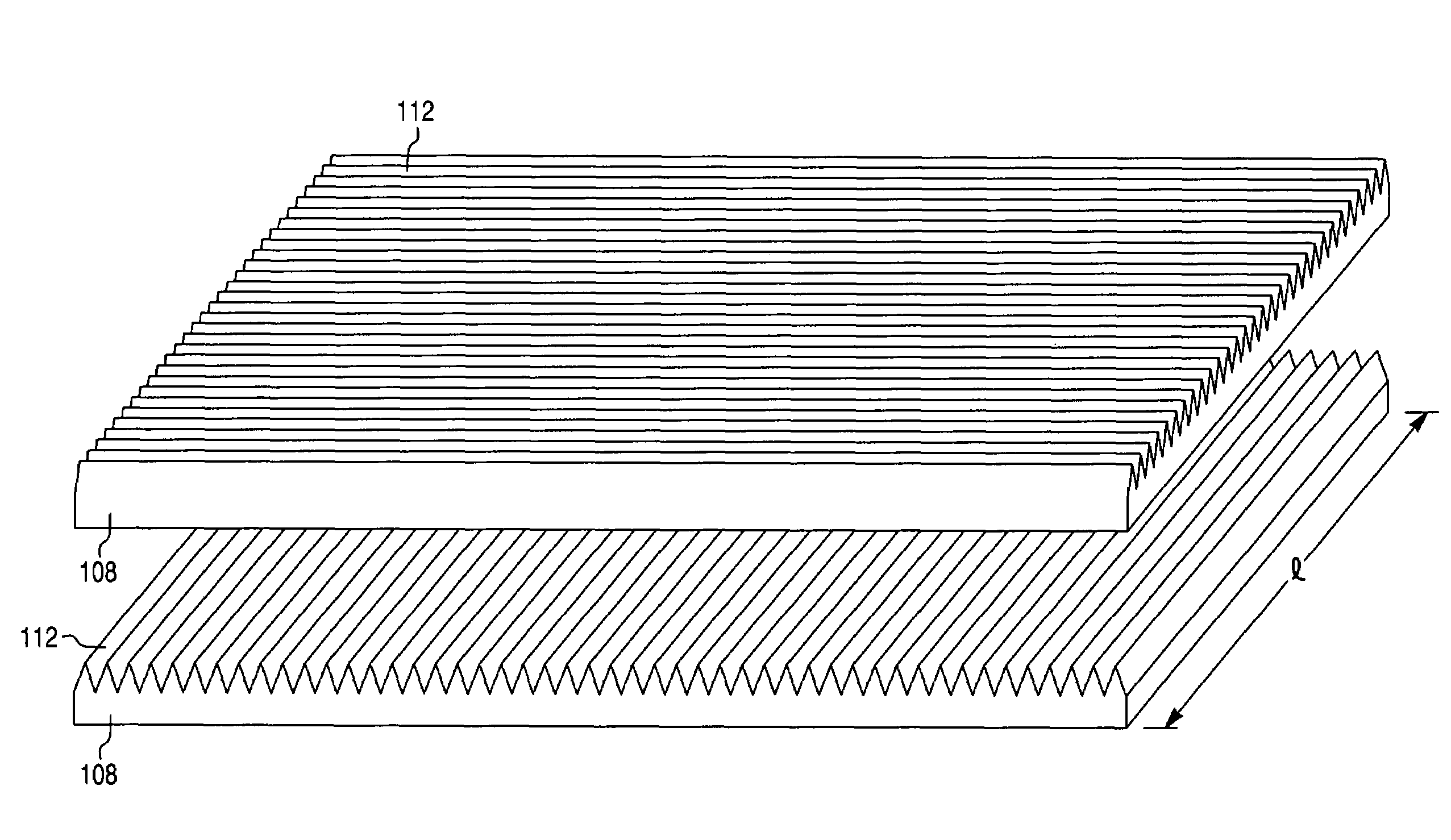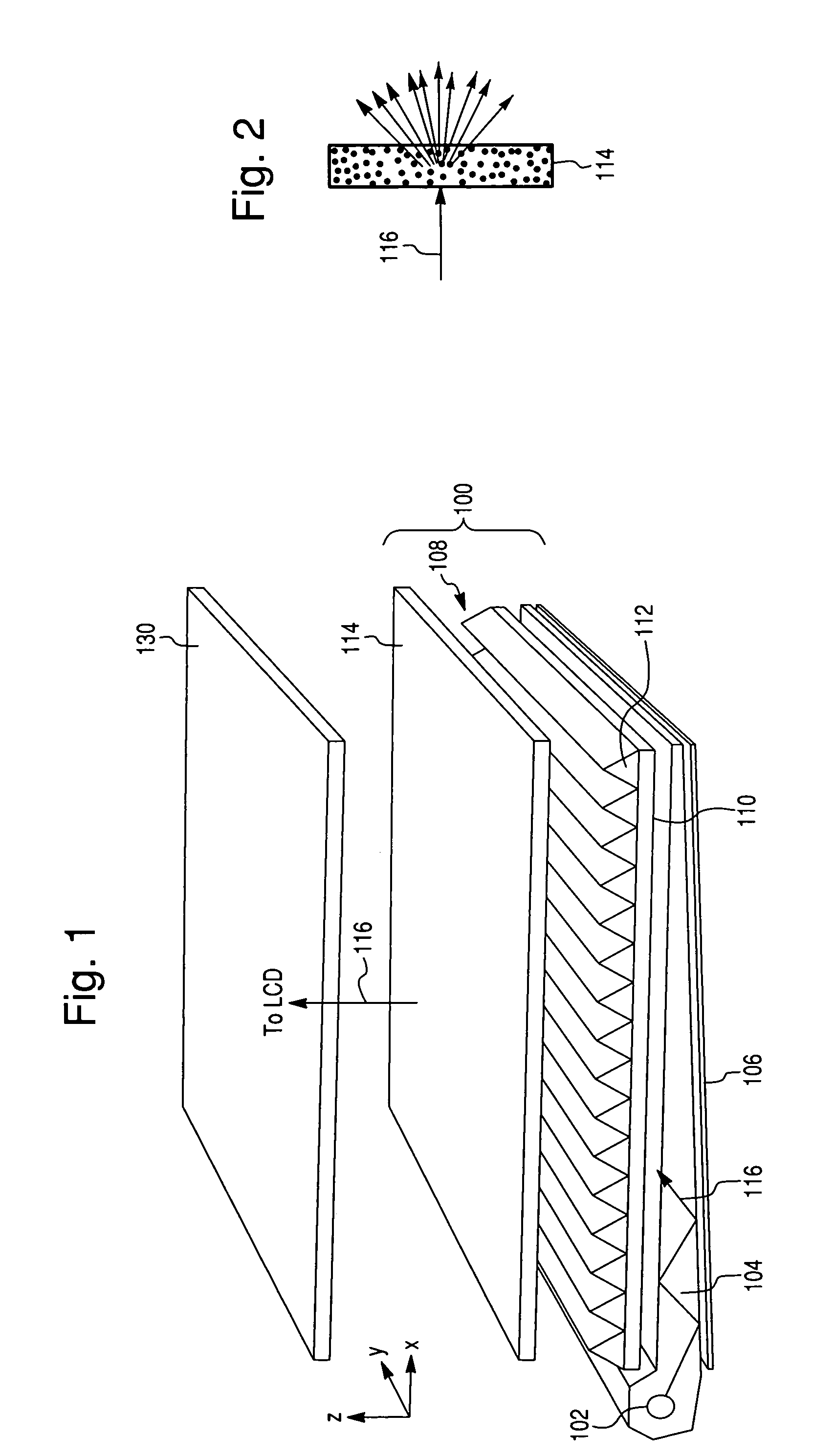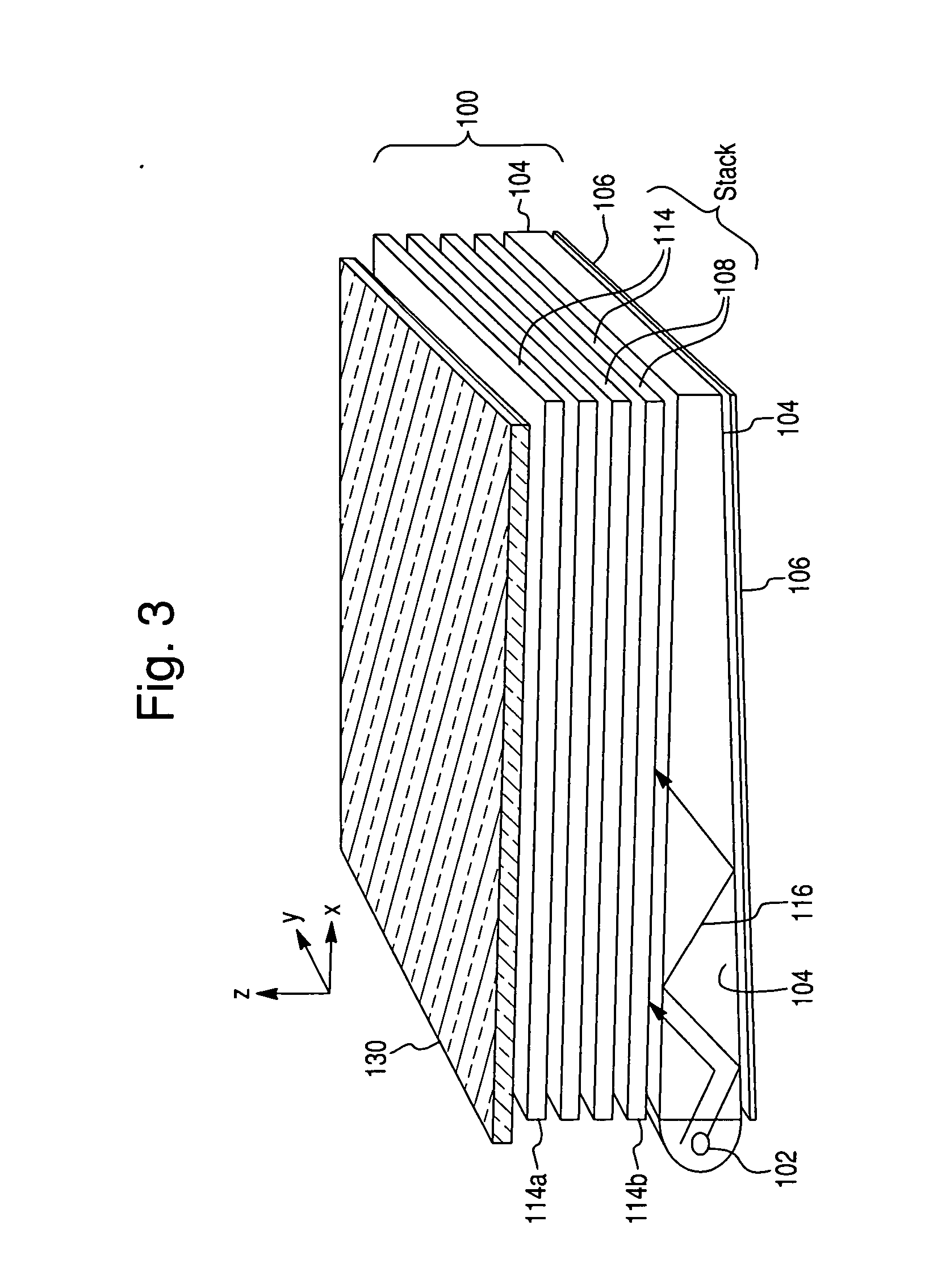Diffuser for flat panel display
a flat panel display and diffuser technology, applied in the field of optical sheet materials, can solve the problems of lack of dimensional stability, coating defects, defect generation, etc., and achieve the effect of preventing discoloration
- Summary
- Abstract
- Description
- Claims
- Application Information
AI Technical Summary
Benefits of technology
Problems solved by technology
Method used
Image
Examples
examples
[0069]The top protective diffusing film requires a very low light scattering power film. This is due to the fact that the luminance that the viewer detects is inversely proportional to the scattering power of the film. The description below outlines the product performance and method of manufacture of a top protective diffuser according to embodiments of the invention.
example # 1
Example #1
Top Diffusing Film
[0070]A state of the art extrusion line (extruder, melt pump, film die, and calendaring roll stack) was used to produce a top protective diffuser product. A chrome plated steel calendaring roll was used, polished to less than 1 μin Ra (Ra is the surface roughness), and a silicone rubber backing roll was used. The polymer resin used was LEXAN EXRL0080-1111 (described in U.S. Pat. No. 6,194,497 to Henricus et al. and available from GE Plastics) with the FC-1 antistatic additive incorporated at a level of between 0.5 and 1.5 mass
Operating conditions included:
[0071]Barrel zone temperatures: 450-550° F.[0072]Mass flow rate: 200-250 lbs / hr[0073]Die zone temperatures: 520-530° F.[0074]Die lip width: 68 inches[0075]Calendaring roll setup:[0076]Roll Position 1: Textured (40 μin Ra nominal) Silicone 0.375 inch thick nominal, 70 Shore A durometer nominal.[0077]Roll Position 2: Polished ([0078]Nip pressure: 30-200 psi (15-150 pli)[0079]Film thickness: 0.005 inch
Chart...
example # 2
Example #2
For Bottom Diffusing Film
[0083]The bottom diffusing film requires a very high light scattering power film. This is to hide features from the light guide and help make the light more uniform. The description below outlines the product performance and method of manufacture of a bottom diffuser.
[0084]A state of the art optical film extrusion line (extruder, melt pump, film die, and calendaring roll stack) was used to produce a bottom diffuser product. A chrome plated steel calendaring roll was used produced using a slow blast texturing process, and a silicone rubber backing roll was used. The polymer resin used was LEXAN EXRL0091-WH5A201X (available from GE Plastics) which has an optimal acrylic bulk scattering additive at a loading of approximately 3-5% and size of 3-7 microns. Again the FC-1 antistatic additive was incorporated at a level of between 0.5 and 1.5 mass %. The polymer particles enhance the diffusing power of the film in conjunction with the textured surfaces. B...
PUM
| Property | Measurement | Unit |
|---|---|---|
| haze | aaaaa | aaaaa |
| surface resistivity | aaaaa | aaaaa |
| haze | aaaaa | aaaaa |
Abstract
Description
Claims
Application Information
 Login to View More
Login to View More - R&D
- Intellectual Property
- Life Sciences
- Materials
- Tech Scout
- Unparalleled Data Quality
- Higher Quality Content
- 60% Fewer Hallucinations
Browse by: Latest US Patents, China's latest patents, Technical Efficacy Thesaurus, Application Domain, Technology Topic, Popular Technical Reports.
© 2025 PatSnap. All rights reserved.Legal|Privacy policy|Modern Slavery Act Transparency Statement|Sitemap|About US| Contact US: help@patsnap.com



